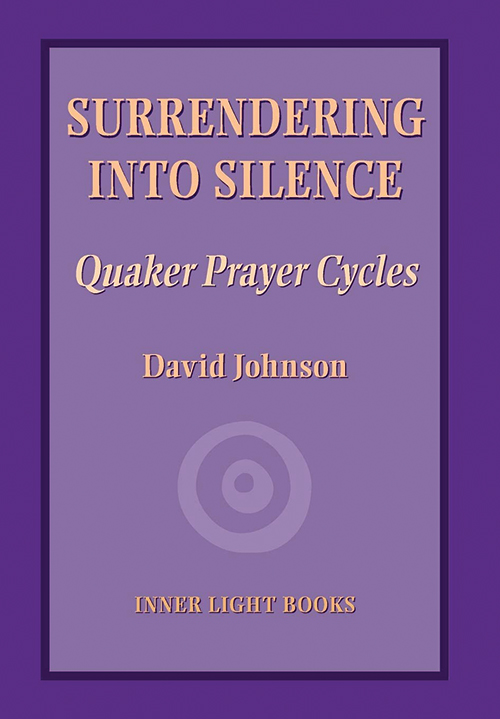
Surrendering into Silence: Quaker Prayer Cycles
Reviewed by Paul Buckley
November 1, 2020
By David Johnson. Inner Light Books, 2020. 73 pages. $21/hardcover; $15/paperback; $10/eBook.
In traditional societies, time is experienced as a cycle—each day starts with dawn, each month with a new moon, and the year is marked by seasons flowing from spring to winter and back to spring. For our ancestors, very little changed from one day to another or one lifetime to the next. One clan or family might gain ascendancy for a while; a city might grow in eminence—maybe even rise up into an empire—but only for a time. People lived much the same lives as their ancestors and expected their children and great-grandchildren would too.
Humanity’s spiritual senses developed within this time frame. Religions and spiritual belief systems appeared, grew, and often disappeared—one after another—as the rounds of life turned.
But then things changed. In the last few hundred years, Western societies have come to see things as following a linear path with a beginning, a middle, and an end. I don’t live in the same way my parents did, and I don’t expect my children to follow in my footsteps. This change in our experience of time is reflected in our spiritual practices. Even in unprogrammed Quaker worship, there is an order of events with a beginning, middle, and an end: We gather; we settle; we center; some speak, and we listen; we shake hands, and we close with announcements.
Seeing an end—a goal we are aiming for—changes the nature of an entire practice. Similarly, our individual routines have beginnings, middles, and ends, and so we set aside time to engage in distinct periods of spiritual practices. In Surrendering into Silence, David Johnson offers another vision, a way of spiritually seeking that moves from beginning to middle, and then on to a new beginning. Johnson was influenced by his exploration of the work of the modern Catholic monk Thomas Keating, who offered a model of the contemplative life as an ongoing series of cycles. In this book, Johnson has drawn out the resemblances between Keating’s concepts and the distinctive mystical practices of Friends since our earliest days in order to describe a cyclical model for Quaker prayer.
Johnson’s text is divided into 11 short sections, starting with turning inward to seek the Divine Presence within each of us, and coming to see ourselves more clearly with each cycle. Along the way are distractions and temptations, he warns. One particular difficulty for modern seekers is the belief that they have found an end:
We can also come to feel “I’ve made it; I know how to do it,” or other temporary or misguided self-commentaries that start with “I.” When this happens, the sense of God’s presence inevitably disappears. The ego has reared its head.
In our society, we are taught to pursue in order to obtain, and having obtained, to claim victory and go home. Johnson warns that this will happen:
God favours us with sweet experiences, with showers of love and the opening of our vision into the spiritual world. Yet the main work is yet to be done. This is the start, not the end; it is the opening of a door, and we are invited to pass through it and start the deeper journey.
This “deeper journey” is a life’s work. With each turning, we spiral inwardly, moving closer and closer to that Inward Light at the core of our very being. This is not an easy stroll into a warm, soft glow: the Light reveals much we would rather not see in ourselves. We will be challenged to admit and confront our shortcomings and our failings. The Light offers us spiritual healing, but reconciliation means surrendering our innermost self to be re-formed.
This is a short book—the main text is only 55 pages—and it can be read in a single sitting. I tried to do that but found it offers much more when taken bit by bit. Each section deserves its own time, and within each section, there are pieces of text that are worthy of individual contemplation. Every section closes with four to six “Reflections,” many from the Bible, many more from the writings of early Friends and gifted writers in other spiritual traditions. My experience was that each reflection claimed its own session. Moreover, I found myself returning to re-read and meditate on individual paragraphs and sentences anew. And when I got to the last page, I was not at an end but an opportunity to begin again.
Paul Buckley is a member of Community Friends Meeting in Cincinnati, Ohio. He is the author of numerous articles and books on Quakerism and (when possible) travels in the ministry urging spiritual renewal among Friends. His most recent book is Primitive Quakerism Revived: Living as Friends in the Twenty-First Century.


